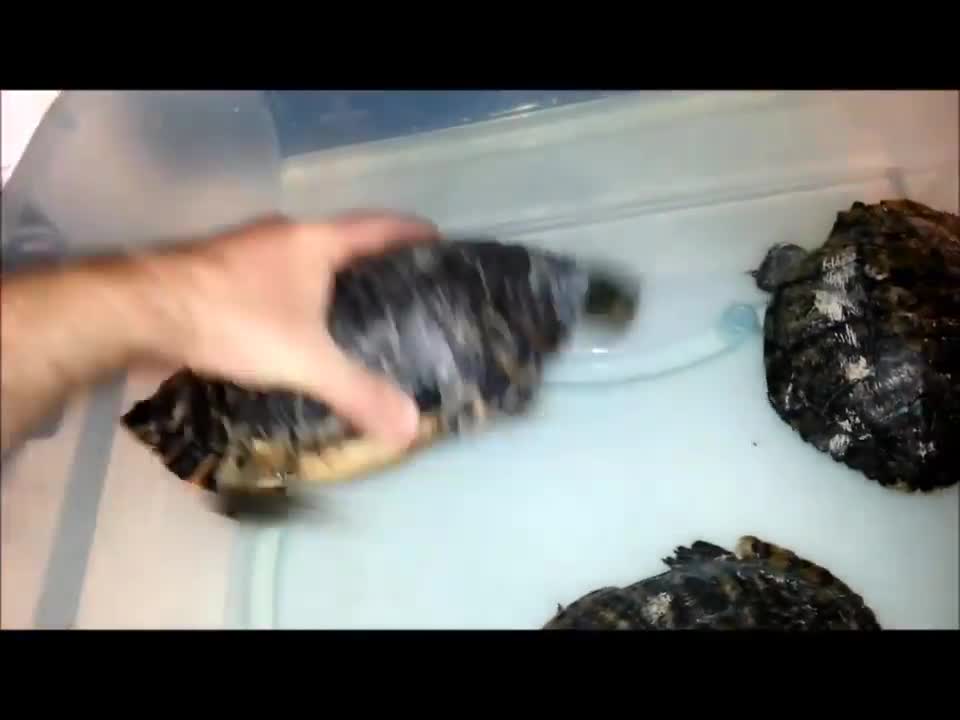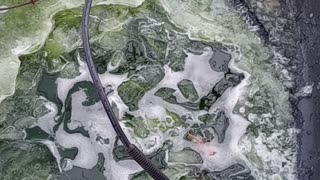Premium Only Content

Remarkable Progress in Aquatic Turtle Rehabilitation
Originally uploaded to my other accounts Oct 5, 2018
Critical to stabilizing aquatic patients in these cases, besides controlling blood loss, is immediate prevention of dehydration and tissue desiccation through placement of ointments, hydrogels, and other barrier dressings, and promotion of granulation as fast as possible. Aquatic turtles dehydrate VERY rapidly through such wounds and though their shell wounds and other trauma may be survivable, they will often end up dying within days from simple hydration losses from soft tissues exposure to outside air. Aquatic turtles cannot survive extended periods away from water sources in normal circumstances, and this is even more so the case when their shell has been opened to the environment. Barriers are critical to saving them in the short term. Over 16 years of rehabilitation work, I've developed and found high levels of successful outcomes when using a mixture I have developed containing a combination of a primary base of SSD, hydrolysate collagen (EMT gel brand), L-Proline powder, and a small amount of Vit. E oil. Sometimes, Manuka honey is also used, if silver sulfadiazine is not available to the at home rehabber. Immediately over this well mixed preparation, petrolatum infused gauze dressings are placed, which provide additional barrier protection from hydration losses. This is then covered with additional gauze, and then often finished with a transparent barrier dressing, such as SorbaView or Tegaderm, or, alternatively, simply with gauze tape and flexible self adhesive "Coban" or "Vet wrap", with several wraps around the shell. The wound is checked and repacked/cleaned about every 3 days, or as needed, depending on the severity of the underlying soft tissue damage, and the dressings replaced.
The key to this successful rehab technique is to NOT disturb this wound bed any more than necessary during the healing process, therefore, daily dressing changes are often NOT ADVISED, nor are additional chemical antimicrobial irrigation solutions on subsequent cleanings and repacking of the wound (chlorhexidine or povidone iodine), if there is no evidence of active infection in the wound bed. Simple sterile water for irrigation or normal saline will suffice for wound cleaning later. When sufficient healing has taken place that routine cleaning and repacking is no longer necessary, but the wound should still not be allowed to contact water for reasons of water intrusion into the body, or from bacterial contamination being a concern, then a more secure and longer term hydrocolloid waterproof dressing can be applied, such as J&J Tough Pads, which can allow even a turtle with a significant shell injury to return to the water for limited periods of time, for eating and hydration purposes, as most aquatic turtles will not eat unless they are in the water at the time. Because they also eliminate wastes when they are in the water, the wound should continue to be protected from contamination until a sufficiently thick layer of soft tissue granulation is in place. However, with appropriate dressings, the turtle can return to the water for ever increaing periods of time, even well before complete healing has taken place, and the stress upon the turtle, dehydration, and weight losses from reduced food intake can be mitigated to give better chances of a successful outcome to what would normally be a mortal injury.
𝕊𝕌𝔹𝕊ℂℝ𝕀𝔹𝔼! 𝕊𝕄𝔸𝕊ℍ +ℝ𝕌𝕄𝔹𝕃𝔼 𝔹𝕌𝕋𝕋𝕆ℕ!
Find me on MeWe:
https://mewe.com/p/reptilerescuerehabilitation
FB: https://www.facebook.com/ReptileRescue
When you donate, you're actively participating in saving animal lives. Your support helps keep the doors open and one more animal to be saved. 🦢🐤 🐍 🐢 🦎 🦆 🐇 🐁 🐟 🐖 🕊🐿🦨🐓 You can help by making a donation today.
PayPal: [email protected]
Donate without a PayPal account at this checkout: https://www.paypal.com/cgi-bin/webscr?cmd=_donations&[email protected]
-
 4:29
4:29
Reptile Rescue
1 year ago $0.03 earnedTurtle Tank Heater Failure During Polar Vortex 😨
88 -
 3:25:55
3:25:55
DillyDillerson
3 hours agoCAN'T SLEEP | Solo Raids | Trying to level up my workshop | Tips and help are welcome!
4.61K -
 LIVE
LIVE
DynastyXL
3 hours ago🔴 LIVE NOW – ARC RAIDING - BADLY! - NEW RUMBLE WALLET - THOUGHTS?
106 watching -
 2:20:13
2:20:13
Side Scrollers Podcast
21 hours agoVoice Actor VIRTUE SIGNAL at Award Show + Craig’s HORRIBLE Take + More | Side Scrollers
70.6K20 -
 LIVE
LIVE
EXPBLESS
1 hour agoShowcasing New Game | (Where Winds Meet) #RumblePremium
41 watching -
 LIVE
LIVE
Boxin
2 hours agolets BEAT! Kingdom Hearts!
61 watching -
 18:49
18:49
GritsGG
17 hours agoI Was Given a Warzone Sniper Challenge! Here is What Happened!
22.2K2 -
 19:02
19:02
The Pascal Show
1 day ago $7.63 earnedNOT SURPRISED! Pam Bondi Is Lying To Us Again About Releasing The Epstein Files
28.9K21 -
 6:05
6:05
Blabbering Collector
21 hours agoRowling On Set, Bill Nighy To Join Cast, HBO Head Comments On Season 2 Of Harry Potter HBO!
25.4K4 -
 57:44
57:44
TruthStream with Joe and Scott
2 days agoShe's of Love podcast & Joe:A co-Hosted interview, Mother and Daughter (300,000+Facebook page) Travel, Home School, Staying Grounded, Recreating oneself, SolarPunk #514
43.7K1